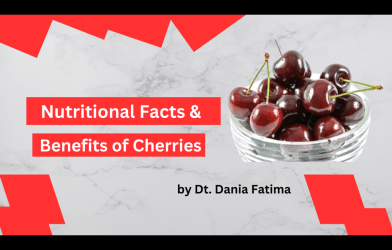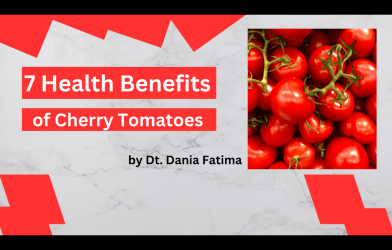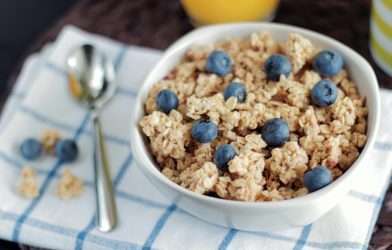Table of Contents
Introduction to Ingredients of 6 Months Baby Cerelac
Ingredients of 6 Months Baby Cerelac: 10 Delicious Baby Cerelac Recipes. Introducing solid foods to your baby is an exciting milestone, and choosing the right products is essential for their health and development. Baby Cerelac offers a nutritious and convenient option for weaning your little one onto solid foods. Crafted with a mix of essential vitamins and minerals, Cerelac helps support your baby’s growing needs. It is designed to be easy to digest and comes in a variety of flavors to suit your baby’s palate. With Baby Cerelac, you can feel confident that your child is receiving a well-balanced, tasty, and enriching meal to start their journey into the world of solid foods.
Benefits of Baby Cerelac
- Nutritional Value: Baby Cerelac is packed with a host of essential vitamins and minerals, ensuring balanced nutrition for your growing baby.
- Easy to Digest: Formulated to be gentle on a baby’s stomach, Cerelac is easy to digest and helps in smoother transitions to solid foods.
- Variety of Flavors: Available in multiple flavors, Baby Cerelac can cater to your baby’s taste preferences, making mealtimes enjoyable.
- Convenience: Being quick and easy to prepare, Baby Cerelac offers convenience for busy parents, ensuring your baby always has a healthy meal ready.
- Growth and Development: The nutrients in Cerelac support overall growth and development, aiding in the physical and cognitive milestones of your baby.
- Trusted Quality: Produced by a reputable brand, Baby Cerelac maintains high-quality standards, offering peace of mind to parents concerned about their baby’s health.
Types of Baby Cerelac According to Baby’s Age
Stage 1 (6 Months+)
At six months, your baby is ready to start experiencing solid foods. Cerelac’s Stage 1 options are designed to introduce your little one to new tastes and textures while ensuring their delicate digestive system is catered to. Varieties in this stage often include simple, single-grain cereals such as rice or wheat, enriched with essential nutrients for your baby’s early development.
Stage 2 (8 Months+)
As your baby grows and becomes more accustomed to solids, Stage 2 Cerelac products offer a bit more complexity. These include multi-grain and fruit combinations that provide a richer nutritional profile. The textures in this stage are slightly more varied, helping your baby develop chewing and swallowing skills. Popular options might include wheat and apple or rice and vegetable blends.
Stage 3 (12 Months+)
By the age of twelve months, your baby is more likely to handle a wide range of foods and more complex flavors. Cerelac’s Stage 3 options introduce an even greater variety of grains, fruits, and vegetables, with chunkier textures for advanced chewers. This stage often includes combinations like multigrain with milk and fruits or oats, wheat, and dates, aimed at meeting the higher nutritional requirements of rapidly growing toddlers.
Whatever stage your baby is at, Baby Cerelac offers tailored nutrition to support their specific needs, making the transition through the different stages of eating both nutritious and enjoyable.
10 Delicious Baby Cerelac Recipes
These are following 10 Delicious Baby Cerelac Recipis;
1. Banana Rice Cerelac
Ingredients:
- 2 tablespoons Stage 1 rice Cerelac
- 1 ripe banana
- Water or formula milk (as required)
Method:
- Mash the ripe banana until smooth.
- Mix the mashed banana with the rice Cerelac.
- Add water or formula milk to achieve desired consistency.
- Stir well and serve immediately.
2. Apple and Wheat Cerelac
Ingredients:
- 2 tablespoons Stage 1 wheat Cerelac
- 1 small apple, peeled and diced
- Water or formula milk (as required)
Method:
- Steam or boil the diced apple until tender.
- Blend the apple into a smooth puree.
- Mix the puree with the wheat Cerelac.
- Add water or formula milk to adjust the consistency.
- Serve warm.
3. Mango and Multigrain Cerelac
Ingredients:
- 2 tablespoons Stage 2 multigrain Cerelac
- 1/4 cup mango puree
- Water or formula milk (as required)
Method:
- Peel and puree a ripe mango.
- Mix the mango puree with the multigrain Cerelac.
- Add water or formula milk to achieve the desired thickness.
- Stir well and serve.
4. Spinach and Rice Cerelac
Ingredients:
- 2 tablespoons Stage 2 rice Cerelac
- 1/4 cup steamed spinach, pureed
- Water or formula milk (as required)
Method:
- Steam the spinach until tender, then blend into a smooth puree.
- Combine the spinach puree with the rice Cerelac.
- Adjust the consistency with water or formula milk.
- Serve immediately.
5. Carrot and Wheat Cerelac
Ingredients:
- 2 tablespoons Stage 2 wheat Cerelac
- 1 small carrot, peeled and diced
- Water or formula milk (as required)
Method:
- Steam or boil the diced carrot until soft.
- Blend the carrot into a smooth puree.
- Mix the carrot puree with the wheat Cerelac.
- Add water or formula milk to modify the consistency.
- Serve warm.
6. Avocado and Multigrain Cerelac
Ingredients:
- 2 tablespoons Stage 2 multigrain Cerelac
- 1/4 avocado, mashed
- Water or formula milk (as required)
Method:
- Mash the avocado until smooth.
- Combine the mashed avocado with the multigrain Cerelac.
- Adjust the consistency using water or formula milk.
- Stir well and serve immediately.
7. Pear and Rice Cerelac
Ingredients:
- 2 tablespoons Stage 3 rice Cerelac
- 1 small pear, peeled and diced
- Water or formula milk (as required)
Method:
- Steam or boil the diced pear until tender.
- Blend the pear into a smooth puree.
- Mix the pear puree with the rice Cerelac.
- Add water or formula milk to adjust the texture.
- Serve warm.
8. Pumpkin and Wheat Cerelac
Ingredients:
- 2 tablespoons Stage 3 wheat Cerelac
- 1/4 cup diced pumpkin
- Water or formula milk (as required)
Method:
- Steam or boil the pumpkin until soft.
- Puree the pumpkin until smooth.
- Combine the pumpkin puree with the wheat Cerelac.
- Add water or formula milk to the desired consistency.
- Serve immediately.
9. Blueberry and Multigrain Cerelac
Ingredients:
- 2 tablespoons Stage 3 multigrain Cerelac
- 1/4 cup fresh or frozen blueberries
- Water or formula milk (as required)
Method:
- Steam the blueberries until soft.
- Blend the blueberries into a smooth puree.
- Mix the blueberry puree with the multigrain Cerelac.
- Add water or formula milk to adjust the thickness.
- Serve immediately.
10. Sweet Potato and Rice Cerelac
Ingredients:
- 2 tablespoons Stage 3 rice Cerelac
- 1 small sweet potato, peeled and diced
- Water or formula milk (as required)
Method:
- Steam or boil the sweet potato until tender.
- Blend the sweet potato into a smooth puree.
- Combine the sweet potato puree with the rice Cerelac.
- Adjust the consistency with water or formula milk.
- Serve warm.
Tips for Feeding Cerelac to Your Baby
- Start Slow: Introduce Cerelac gradually. Begin with small amounts, watching for any signs of allergies or sensitivities.
- Consistency is Key: Adjust the consistency of Cerelac to what your baby is comfortable with. For younger babies, a thinner mixture is usually easier to swallow, while older babies might enjoy a thicker texture.
- Use a Spoon: Always use a spoon to feed your baby Cerelac. This helps develop their eating skills and encourages them to get used to the idea of solid food.
- Maintain Cleanliness: Ensure all feeding utensils are clean and sterilized to avoid any risk of infection or illness.
- Temperature Check: Serve Cerelac at a lukewarm temperature. Too hot or too cold can be uncomfortable for your baby and might harm their developing taste buds.
- Observe and Adapt: Carefully watch how your baby reacts to the new food. If they consistently reject or seem uncomfortable with Cerelac, consult with your pediatrician to make sure there’s no underlying issue.
- Mix With Familiar Foods: Mix Cerelac with breast milk, formula, or pureed fruits and vegetables that your baby already enjoys. This can help ease the transition to solid foods.
- Be Patient and Positive: It might take time for your baby to get used to new textures and flavors. Encourage and praise them to make feeding times positive.
- Follow the Recommended Age Stages: Use the appropriate type of Cerelac for your baby’s age to ensure they are getting the right nutrients in the suitable form for their development stage.
- Stick to a Routine: Try to feed Cerelac at the same times each day. Babies thrive on routine, and it can help them develop regular eating habits.
Conclusion about Ingredients of 6 Months Baby Cerelac: 10 Delicious Baby Cerelac Recipes
Ingredients of 6 Months Baby Cerelac: 10 Delicious Baby Cerelac Recipes. Introducing Cerelac into your baby’s diet can be an exciting milestone, providing essential nutrients crucial for growth and development. By offering a variety of flavours and combining them with familiar foods, you can make this transition smooth and enjoyable for your child. Always keep an eye on their reactions and adapt as needed to ensure they are receiving the best possible care. Remember, the journey of introducing solid foods is a gradual process that requires patience, creativity, and a positive attitude. With these tips and recipes, you are well-equipped to nourish your baby with wholesome and delicious meals.
FAQs About Ingredients of 6 Months Baby Cerelac: 10 Delicious Baby Cerelac Recipes
1. What is Cerelac?
Cerelac is a brand of instant cereal made specifically for babies, providing essential nutrients required for their growth and development. It is usually available in different stages, tailored to the evolving nutritional needs of infants as they grow.
2. When can I start feeding my baby Cerelac?
Most pediatricians recommend introducing Cerelac around six months of age when your baby is ready for solid foods. However, it’s always best to consult your pediatrician before starting any new food.
3. How do I prepare Cerelac?
You can prepare Cerelac by mixing it with breast milk, formula milk, or water to achieve the desired consistency. Follow the instructions on the packaging for the correct ratio of Cerelac to liquid.
4. What should be the consistency of Cerelac?
The consistency of Cerelac should be adjusted according to your baby’s age and comfort. Younger babies typically prefer a thin mixture, while older babies may enjoy a thicker consistency.
5. Can I mix fruits and vegetables with Cerelac?
Yes, you can mix pureed fruits and vegetables with Cerelac to introduce more variety and nutrients to your baby’s diet. This can also help your baby get accustomed to new flavors and textures.
6. How should I store Cerelac?
Store unopened Cerelac in a cool, dry place. Once opened, ensure the product is sealed tightly after each use and kept in a hygienic environment. Always check for any storage instructions on the packaging.
7. What are the signs that my baby is ready for Cerelac?
Signs that your baby might be ready for solid foods like Cerelac include the ability to sit up with support, showing interest in food, losing the reflex to push solids out of their mouth, and being able to swallow food.
8. How often should I feed my baby Cerelac?
Start by offering Cerelac once a day and gradually increase to two or three times daily as your baby gets used to solid foods. Again, follow your pediatrician’s advice on the ideal feeding frequency for your baby.
9. Can Cerelac cause allergies?
While Cerelac is formulated to be safe for babies, some children may have allergies to certain ingredients. Introduce new foods one at a time and monitor your baby for any adverse reactions such as rashes, vomiting, or diarrhea.
10. Is Cerelac a substitute for breast milk or formula?
While Cerelac provides essential nutrients, it should not be considered a substitute for breast milk or formula. These remain crucial sources of nutrition for your baby, especially in the first year of life. Cerelac should complement, not replace, these primary sources of nutrition.


















